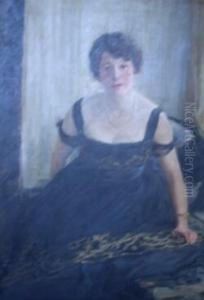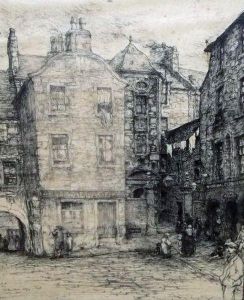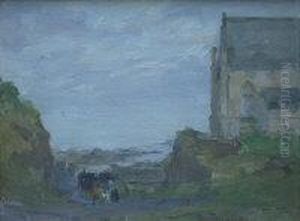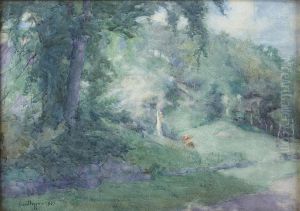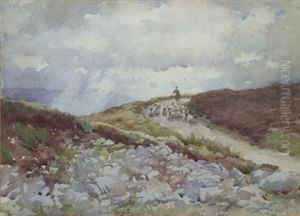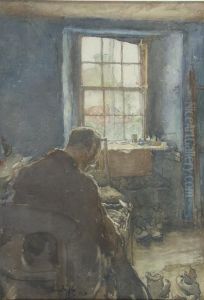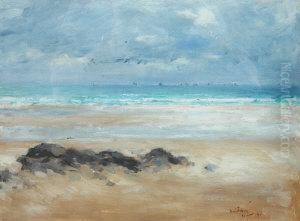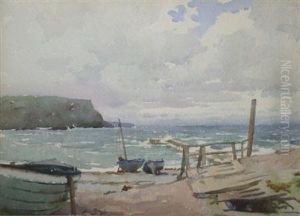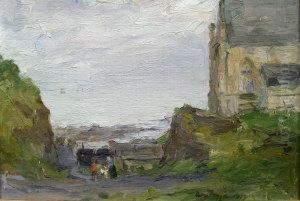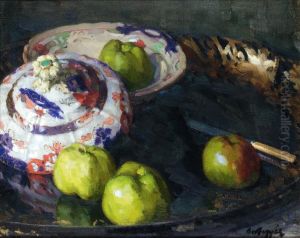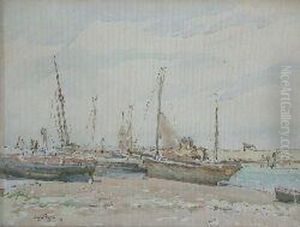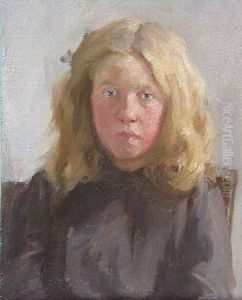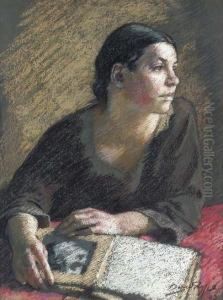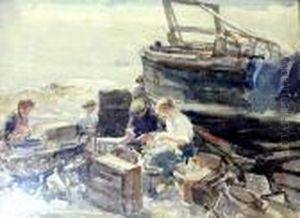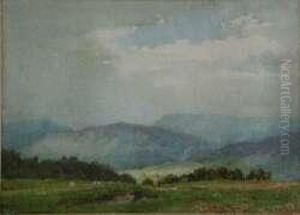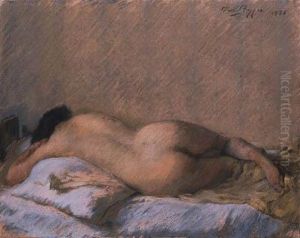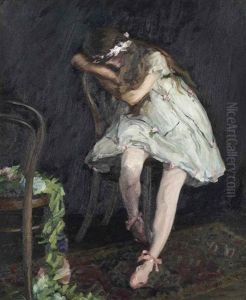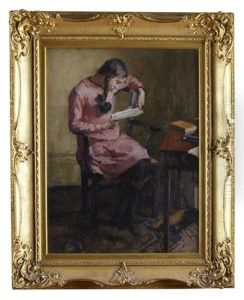David Foggie Paintings
David Foggie was a prominent Scottish painter and influential art teacher, born in Dundee, Scotland, in 1878. His artistic journey began at the Dundee School of Art, where he initially studied before moving on to further his education at the Antwerp Academy under the tutelage of Charles Verlat. Foggie's early works were influenced by the Flemish tradition, a reflection of his studies in Belgium, but his style evolved over the years to incorporate elements of the Scottish Renaissance, a movement that sought to revive Scottish arts and literature under modern sensibilities.
After his studies in Antwerp, Foggie returned to Scotland, where he became a central figure in the artistic community. He settled in Dundee, where he was deeply involved in the local art scene, teaching and influencing a new generation of artists. His commitment to art education was evident in his role as a teacher at the Dundee School of Art, where he eventually became the headmaster. Foggie's influence extended beyond Dundee, as he was also involved in teaching at the Edinburgh College of Art.
As an artist, Foggie was renowned for his portraits, landscapes, and religious subjects. His work is characterized by a meticulous attention to detail, a rich palette, and a deep sense of spirituality. Throughout his career, he exhibited widely, both in Scotland and internationally, gaining recognition and acclaim for his contributions to Scottish art.
David Foggie's legacy is preserved through his artworks, which can be found in various public collections, including the National Galleries of Scotland. His commitment to fostering artistic talent and his contributions to the Scottish art scene have made him a respected figure in the history of Scottish art. Foggie passed away in 1948, leaving behind a body of work that continues to be celebrated for its depth, craftsmanship, and unique Scottish character.
